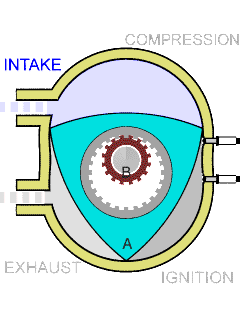
Yesterday’s news that Mazda is planning a 449hp rotary engine for the RX-9 attracts many attention.
Now let us take a look at some interesting facts about the rotary engine.
Advantages about the rotary engine
1. Because there is no crankshaft, valves, pistons etc., the rotary engine is lighter, runs with less vibration;
2. Longer strokes, less prone to knocking and less pumping loss, which is more suitable for turbocharging, direct injection and lean burning;
3. Quicker throttle response;
4. Less moving parts such as pistons, valves, so rotary engine has less probability of sudden failures when compared to other traditional internal combustion piston engines.
Below is an animation of how the rotary engine works.
Disadvantages
1. Large temperature variation in the engine casing (because different sections of the casing are related to different stroke areas), which causes sealing difficulty to the rotary tips;
2. Intake/exhaust are not optimized, leads to lower fuel efficiency (if you look close at the above animation, you will find that there is a brief moment that intake and exhaust paths are connected)
3. Reliability concern forces engineers use the heavier forged steel to make the engine casing (at least, this is the case for the Renesis engine in the RX-8), which offset the advantage #1 mentioned above;
4. Not easy to control ignition for fuel direct injection, therefore the next generation of the Mazda rotary engine (16X) will use another very state-of-the-art technology – laser ignition;
Generally speaking, rotary engine is very unique, only Mazda is still put efforts on it at this time. I have very high expectation on the upcoming RX-8 successor.




Recent Comments